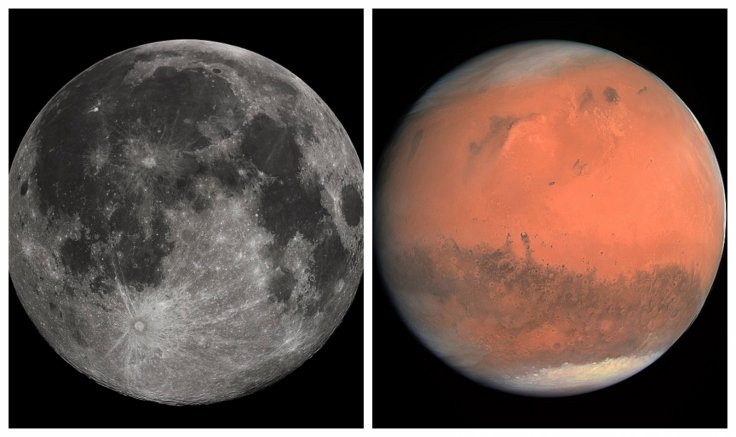Most of us know about the 'space race' which was a Cold War competition between the US and Soviet Union that involved unmanned space probes, human space flights, and also the Moon landing. Even though Russia became the first to send a human to space, it was the US that made history after sending humans to land and on the moon and hoist the US flag. But during this Coronavirus pandemic year, China did something which Russians failed to achieve.
China became the second country after the US to plant its flag on Moon. The images of the flag, captured during the Chang'e-5 lunar sample mission, were shared by the Chinese space agency, China National Space Administration (CNSA) on Friday, December 4. But unlike the US, China did not send Chinese astronauts to plant their first flag on Moon.

It Took China 50 Years
During the Cold War, the Soviet Union was the top rival of the US but by putting humans on the moon with an American flag for the first time the US put an end to it. To this date, historians and experts debate how and why the once-flourishing Soviet space program suddenly fell behind in the race to the Moon--whether because of internal issues or engineering failure.
But China, which has increased space spending 349 percent over 15 years, became the second country to place a flag on Moon without sending a Chinese astronaut. What China did this time was already achieved by the US almost 50 years ago during the manned Apollo 11 mission in 1969, followed by five more Moon missions until 1972.
The Flag
It was reported earlier that, as per the experts all the six flags planted by the American astronauts did not survive on the Moon. As per the Apollo Lunar Surface Journal, "Experts mostly think it highly unlikely the Apollo flags could have endured the 42 years of exposure to vacuum, about 500 temperature swings from 242 F during the day to -280 F during the night, micrometeorites, radiation, and ultraviolet light, some thinking the flags have all but disintegrated under such an assault of the environment."
The recent images of the Chinese flag on Moon were taken by a camera on the space probe, few days after it landed on Moon's north side and moments before it launched the return mission to Earth on Thursday, December 3. The lunar lander was equipped with a flag-raising mechanism. The Chinese flag, two-meter-wide and 90-centimeter-tall, is made from a special fabric that allows it to be on the lunar surface as it is despite extreme lunar temperatures, said project leader Li Yunfeng.
Being the second country to achieve what Russia could not, even though this milestone is almost nothing compared to what US' space mission achievements, China could not stop celebrating as this incident marks a proud moment for the country. A tweet by the Mission of China says, "Proud to have our national flag Flag of China unfolded on the moon. The #Change5 probe collected samples and took off from the moon. It will contribute to global scientific studies in fields such as the formation and evolution of the moon."
The Change-5 spacecraft collected the lunar samples and took them back to its orbiter, where they will be enclosed in a module and sent back to Earth. The collected samples are expected to land in China's Inner Mongolia region in mid-December.
What the US Is Planning?

The US spends more than any other country on space programs. The American space agency, NASA has been planning to do something bigger. In December 2017, President Donald Trump signed Space Policy Directive-1, in which he directed NASA "to lead an innovative and sustainable program of exploration with commercial and international partners to enable human expansion across the solar system and to bring back to Earth new knowledge and opportunities."
NASA's Exploration Campaign has five strategic goals:
- Transition US human spaceflight activities in low-Earth orbit to commercial operations that support NASA and the needs of an emerging private sector market.
- Lead the emplacement of capabilities that support lunar surface operations and facilitate missions beyond the moon.
- Foster scientific discovery and characterization of lunar resources through a series of robotic missions.
- Return US astronauts to the surface of the Moon for a sustained campaign of exploration and use.
- Demonstrate the capabilities required for human missions to Mars and other destinations.









